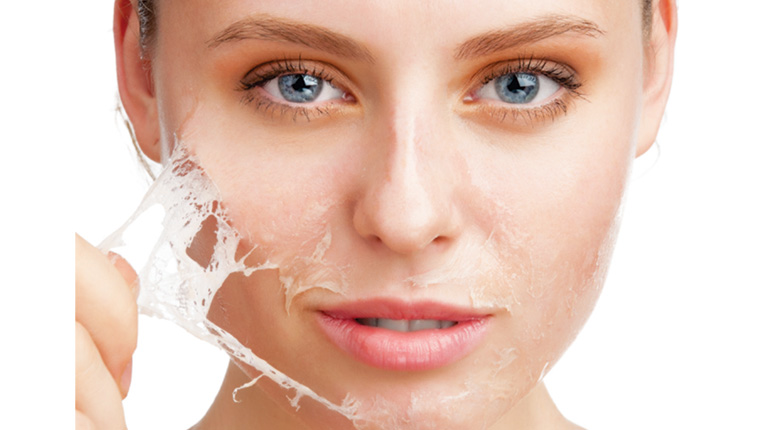What are the risks of chemical peel?
The most commonly used glycolic peels are superficial peels hence quite safe with minimal side effects. However the more deep peels like the trichloroacetic acid TCA, phenol peels and resorcinol peels may cause some scabbing, colour changes, post inflammatory hyperpigmentation, hypopigmentation, delayed healing, persistent erythema swelling, flaking of skin and increased sensitivity to sunlight.
When can I return to normal activity after a chemical peel?
It is important to discuss with your doctor and avoid scheduling peels very close to important events or vacations. It is advisable to keep a safe period of 3 to 5 days after a superficial peel before returning to normal activity however it may have individual variations.
Can peels be combined with other treatments?
Chemical peels can be combined with other cosmetic procedures as botulinum toxin, fillers, lasers and microneedling this is a very effective method to ensure superior results. However facials, steaming and bleaching or waxing are strictly prohibited for a week after peels
What are Chemical Peels?
Chemical peels are treatment done by application of a chemical agent to the skin which causes controlled destruction of a part or the entire epidermis with or without the deeper dermis leading to exfoliation, removal of superficial skin cells and followed by formation of a new and better looking skin.
What are Chemical Peels used for?
Chemical peels are used to improve the appearance and texture of the skin, to reduce fine lines and wrinkles, to treat acne scars and pigmentation from acne, blemishes, to reduce acne breakouts, to clear acne prone skin, to reduce age spots, sunspots, and melasma or dark patches acquired during pregnancy
In what Conditions Should one Avoid Chemical Peels?
In case of active bacterial or fungal infections, inflammatory conditions, allergic tendencies of the skin, keloidal tendency, when one is on photosensitising drugs, when one has undergone deep resurfacing treatments with dermabrasion or lasers or any surgery in the recent past or when the expected results are in a very short time frame.
What are the different chemicals used in peel treatments?
Glycolic acid, lactic acid, resorcinol, mandelic acid, azelaic acid, salicylic acid, trichloroacetic acid, kojic acid, tretinoin, arginine, ferulic acid and phenol are some of the chemicals used in chemical peels.
How do I prepare for a chemical peel?
For best results you should prepare your skin for at least 2 weeks prior to the treatment e.g. if you are getting treatment for pigmented skin you should start using a skin lightening cream at least 2 weeks before the treatment. Usage of a broad spectrum sunscreen recommended by your dermatologist is a mandatory step before getting peels done.

How are chemical peels performed?
After cleansing and toning the skin gentle application of 1 or 2 layers of the acid are applied to the skin to peel away the affected skin surface. Depending on the technique used the solution is left on your skin for a certain period of time before the product is removed or neutralised. Then your skin is wiped clean and an antibacterial cream is applied followed by a sun screen .Certain peels may be left on for stipulated time interval as will be indicated by your doctor.
How long does a treatment take?
A routine chemical peel does not take more than 15 minutes that is why it is called ‘lunchtime peel’
What does the treatment feel like?
After applying the peel patients feel a slight stinging sensation which subsides shortly after. A temporary dryness or some redness and visible peeling may be experienced by some.
What post peel advice should I follow?
Gentle washing of face, frequent application of moisturisers, avoidance of exfoliating sponges and sun exposure, regular and frequent use of sunscreen from day 1 after the peel. Do not scratch, scrape or pick the skin and do not use a mask on the skin in order to avoid scarring. Avoid getting into chlorinated water for at least 3 days after the peel.
How many peels will I need?
Usually at least 6 treatments are advised spaced at 10 to 14 days interval to ensure lasting results even though you may see an improvement even after 1 or 2 treatments.
What are the benefits of a chemical peel?
Immediately after the treatment you may notice some redness which will disappear by the end of the day. You will notice a better hydrated skin (seen as a glow by some) and an improve texture of the skin.
How long do the results last?
The results can last for months or years depending on the depth of the peel, usually the deeper peels have more long lasting results.
Dislaimer
The information in this article reflects the views of the author only. a qualified health care professional should be consulted before using any therapeutic product discussed. all readers should verify all information and data before treating patients or utilizing any therapies noted in this programme.

